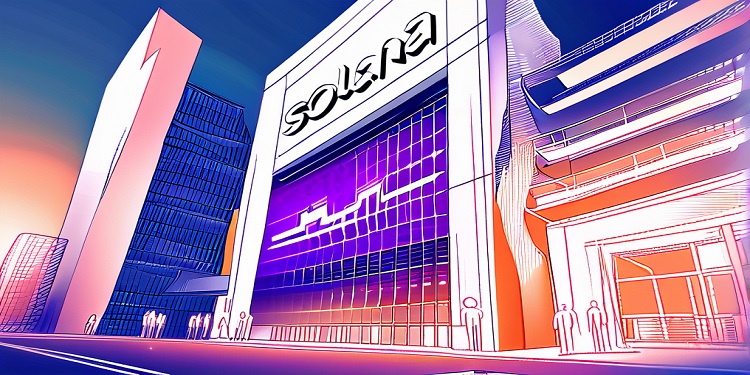DIA, an open oracle network known for providing trustless data solutions for decentralized applications (dapps), recently introduced a significant innovation in the form of a new oracle architecture named Lumina. The release of this system is poised to revolutionize the way Web3 applications handle data by improving scalability, decentralization, and security within the ecosystem. Built to meet the evolving demands of decentralized finance (DeFi) and other Web3 applications, Lumina promises to address the limitations of existing oracle systems by providing a more reliable and flexible solution.
The foundation of Lumina’s architecture is designed to support decentralized data infrastructure in a trustless manner. By incorporating modular components, the system is capable of gathering, verifying, processing, and delivering data to dapps. DIA has integrated Ethereum Layer-2 (L2) technology into Lumina’s core through its proprietary rollup called Lasernet. This ensures that data verification and node contributions remain decentralized, achieved through the use of zero-knowledge proofs. These cryptographic proofs allow the platform to maintain both privacy and security, as the data can be verified without revealing any sensitive information.
Modular Architecture and Zero-Knowledge Proofs: A New Standard in Data Handling
One of the primary goals of Lumina is to address the scalability challenges that many existing oracle systems face, while also maintaining high levels of decentralization. The modular nature of the system allows it to adapt to different use cases, enabling the oracle to gather data from a wide range of sources. DIA’s approach involves integrating node incentives, which ensures that trade data from over 100 centralized and decentralized exchanges (DEXs) is collected and secured. This wide range of data sources enhances the reliability of the information used by decentralized applications, making it more resilient to manipulation or failure.
Lumina’s deployment will follow a phased approach, starting with a testnet phase, which will gradually be followed by mainnet releases. This staged rollout is designed to allow for growing user participation over time, with each phase intended to ensure that the system operates smoothly and securely before wider adoption takes place. DIA believes that this cautious approach will help ensure the integrity and security of the system as more users and applications come on board.
DIA has emphasized that Lumina is the culmination of years of innovation in Web3 infrastructure. The organization aims to provide a decentralized and trustless oracle network that prioritizes both security and flexibility. This vision aligns with the growing needs of the Web3 ecosystem, where decentralized applications increasingly require robust and scalable data solutions. By using zero-knowledge proofs and a decentralized node system, Lumina ensures that all data is verified and processed in a trustless manner, which is key to fostering a more secure and reliable Web3 environment.
Improving Scalability and Data Transparency for DeFi Applications
The architecture of Lumina goes beyond basic data collection and verification. The system is designed to support customizable and transparent data feeds, which can be distributed across multiple blockchains. This capability is crucial for decentralized finance (DeFi) applications, where accurate and timely data is needed to ensure proper functionality and trust. By using a decentralized messaging protocol, Lumina allows data to be distributed as required by various applications, improving both the scalability of the system and the immutability of data processing.
DIA’s new oracle architecture is not limited to a single blockchain or ecosystem, making it versatile enough to serve a wide range of decentralized applications. This adaptability ensures that the data infrastructure can evolve alongside the Web3 ecosystem, meeting the changing needs of DeFi applications, NFT platforms, and other dapps that rely on accurate data for their operations.
The integration of zero-knowledge proofs into the system also strengthens the overall security of the data-handling process. These proofs allow for the verification of data without revealing any underlying information, ensuring that data can be processed securely while maintaining user privacy. This feature is particularly relevant in the context of decentralized finance, where the need for both transparency and security is paramount.
Phased Rollout and Future Vision
DIA has stated that the rollout of Lumina will begin with a testnet phase, during which early adopters will be able to test the system’s capabilities. This will be followed by incremental mainnet releases, allowing for broader participation and more comprehensive testing as the platform scales. The phased approach aims to ensure that any potential issues are identified and addressed before the system is fully operational. Over time, DIA anticipates that Lumina will become an essential part of the Web3 infrastructure, providing decentralized applications with the reliable and scalable data feeds they need to function effectively.
In summary, the introduction of Lumina marks a significant step forward for DIA in its mission to provide decentralized data infrastructure for Web3. By addressing key challenges in scalability, decentralization, and data verification, the Lumina architecture lays the foundation for a more secure and adaptable oracle network. As decentralized applications continue to grow in complexity and demand, systems like Lumina will play a crucial role in ensuring that data infrastructure keeps pace, providing the trustless and reliable data solutions that are essential for the future of Web3.









